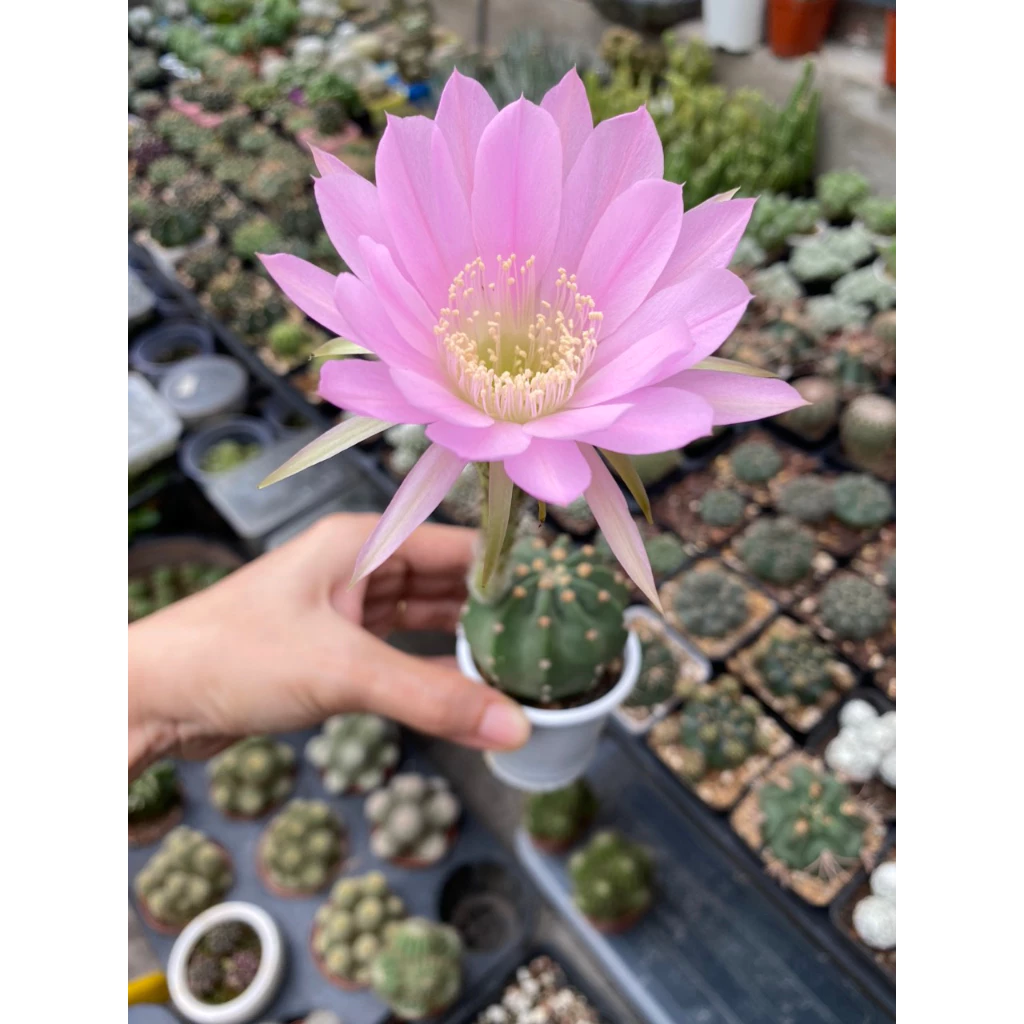Uncategorized
12 Indoor Air Purifying Plants
AIR PURIFIER
NASA research has shown that indoor air contains a large number of toxic chemicals such as benzene, trichloroethylene, ammonia, etc. But NASA scientists believe that common indoor plants can be a valuable weapon in the fight against increasing levels of indoor air pollution.
Some of them can absorb up to 85% of harmful gases, cleaning the air in homes, public spaces in office buildings, growing indoor plants not only beautifies your home and now you want to find effective indoor air-purifying plants such as snake plants, peace lilies, pothos, etc. to grow indoors?
These types of plants have the ability to purify the air, absorb pollutants in the living environment, bringing a fresh, healthy living space to your family. Below are the top 12 indoor plants that NASA recommends you consider growing indoors for better health and cleaner air:
1. TIGER’S TONGUE PLANT
– Characteristics: Considered the king of air-purifying plants. The snake plant is easy to grow and care for, and can grow almost anywhere, in low light or low water conditions. The plant has a positive effect in removing formaldehyde, benzene, and trichloroethylene at home or in the office. Especially at night, the plant also helps absorb carbon dioxide and “release” oxygen. In addition, you should also place this plant in a room with many printers and computers because the plant has the ability to remove the magnetism emitted from the above electronic devices.
– How to care for: The plant does not like water, water once a week and does not need to be watered much. Occasionally, 1-2 weeks, leave the plant in the light so that the plant can photosynthesize naturally.
2. PEACE LILY
– Characteristics: Peace Lily is known for its ability to remove toxic substances such as benzene, formaldehyde, xylene, toluene and trichloroethylene from the air. This is a plant that can be grown in water or soil depending on your preference. In addition, the plant also has beautiful white flowers suitable for decorating the living room, office or dining table.
– How to care: The plant likes water, water 2-3 times/day. Occasionally, 1-2 weeks leave the plant in the light so that the plant can photosynthesize naturally. If grown in water, you only need to change the water once every 2 weeks and add 5-6 drops of hydroponic solution for the plant to grow well.
3. FLAMINGO PLANT
– Characteristics: According to NASA’s experiment, Anthurium retains moisture in the air very well. This plant also absorbs xylene and toluene and converts them into harmless substances. Anthurium has beautiful pink flowers suitable for decorating living rooms, offices, etc. Similar to Peace Lily, Anthurium can be grown in water or soil.
– Care: Similar to Peace Lily, Anthurium likes water, water 2-3 times/day. Occasionally, 1-2 weeks leave the plant in the light so that the plant can photosynthesize naturally. If grown in water, you only need to change the water once every 2 weeks and add 5-6 drops of hydroponic solution for the plant to grow well.
4. EMPEROR POTTY PLANT
– Characteristics: The Emperor Pothos is known as one of the best plants for filtering formaldehyde and other toxic chemicals from the air. This plant grows well in low light and is easy to care for, and can live in an air-conditioned environment.
– Care: The plant does not like water, water once a week and does not need much watering. Occasionally, 1-2 weeks, leave the plant out in the light so that it can photosynthesize naturally.
5. SPIDER PLANT
– Characteristics: Spider Plant or Spider Plant is a great choice for purifying indoor air. Research has shown that it helps remove benzene, formaldehyde, CO and xylene from indoor air. In terms of appearance, the plant is easy to grow, beautiful and completely harmless to children and animals.
– How to care: The plant likes water, water 2-3 times/day. Occasionally 1-2 weeks to leave the plant in the light so that the plant can photosynthesize naturally. If you grow hydroponically, you only need to change the water once every 2 weeks and add 5-6 drops of hydroponic solution for the plant to grow well.
6. RICH TREE
– Characteristics: The Aglaonema plant is proven to be effective in purifying benzene and formaldehyde in the air. The plus point is that this plant does not need much sunlight to grow, but it does require a humid environment. This is a plant that can be grown in water or soil depending on your preference. The plant has a characteristic red color that is very suitable for people of the Fire element.
– How to care for: The plant likes water, water it 2-3 times a week. Occasionally, 1-2 weeks, leave the plant in the light so that the plant can photosynthesize naturally. If you grow it in water, you only need to change the water once every 2 weeks and add 5-6 drops of hydroponic solution for the plant to grow well.
7. ALOE VERA PLANT
– Characteristics: The plant grows quickly, can withstand drought, heat and light. Aloe Vera can be displayed on the desk, dining room, bathroom… because the plant’s resistance is very good. In addition to aloe vera, Aloe Vera is also like Tiger Tongue, it has the ability to absorb carbon dioxide and release oxygen at night, so it is suitable to be placed in the bedroom or office with low light.
– How to care: The plant does not like water, water once a week. Occasionally, 1-2 weeks leave the plant in the light so that the plant can photosynthesize naturally. However, if you grow hydroponically, you only need to change the water once every 2 weeks and add 5-6 drops of hydroponic solution for the plant to grow well.
8. PENNSYLLABLE PLANT
– Characteristics: Dieffenbachia is one of the easiest plants to grow and has the ability to purify the air very well. In fact, this plant has the ability to purify benzene and formaldehyde effectively, in addition, the plant can also grow well in low light environments.
– How to care: The plant likes water, water 2-3 times/week. Occasionally 1-2 weeks to leave the plant in the light so that the plant can photosynthesize naturally. If you grow hydroponically, you only need to change the water once every 2 weeks and add 5-6 drops of hydroponic solution for the plant to grow well.
9. RED BUD FIGURE
– Characteristics: Red Ficus is also a plant that has a very good air purifying effect. The plant is extremely easy to grow, can easily reproduce in low temperature and low light environments. Planting red Ficus, you can help your living environment become much cleaner without having to spend too much time taking care of the plant.
– How to care: The plant does not like water, water once a week. Occasionally 1-2 weeks leave the plant out in the light so that the plant can photosynthesize naturally.
10. DRAGONA PLANT (DRAGONA PLANT)
– Characteristics: The Phất Dụ Mạnh plant likes light or partial shade. The plant is suitable for indoor decoration, with average water needs, not too much. This plant can filter xylene, trichloroethylene, formaldehyde gases which are found in many lacquer, oil paint, and waterproofing products.
– Care: The plant does not like water, water once a week. Occasionally, once a week, put the plant out in the light so that the plant can photosynthesize naturally because the plant still likes more light.
11. Acanthopanax
– Characteristics: The Five-leaf ivy plant has been proven by NASA to be effective in reducing formaldehyde, toluene and benzene from the air. In addition, the plant has the ability to repel mosquitoes and insects, making it suitable for placing on desks and study tables.
– Care: The plant does not like water, water once a week. Occasionally, once a week, leave the plant in the light so that the plant can photosynthesize naturally because the plant still prefers more light.
12. ARECA PLANT
– Characteristics: Areca Palm can live in low light conditions for a long time, without much care. Can be grown in water or in soil. Areca Palm has the ability to absorb toxic substances produced from many household items such as formaldehyde, toluene and benzene. In particular, this is the only plant that can filter cigarette smoke, very good when placed on the desk.
– How to care: The plant likes water, water 2-3 times/week. Occasionally, 1-2 weeks leave the plant in the light so that the plant can photosynthesize naturally. If grown in water, you only need to change the water once every 2 weeks and add 5-6 drops of hydroponic solution for the plant to grow well.
There are also many types of ornamental plants that can be used to decorate the house, desk, classroom… if you have any needs, just contact Cay Xinh directly via phone number 096.596.2586 or 094.822.5678 for Cay Xinh’s experts to advise you!

